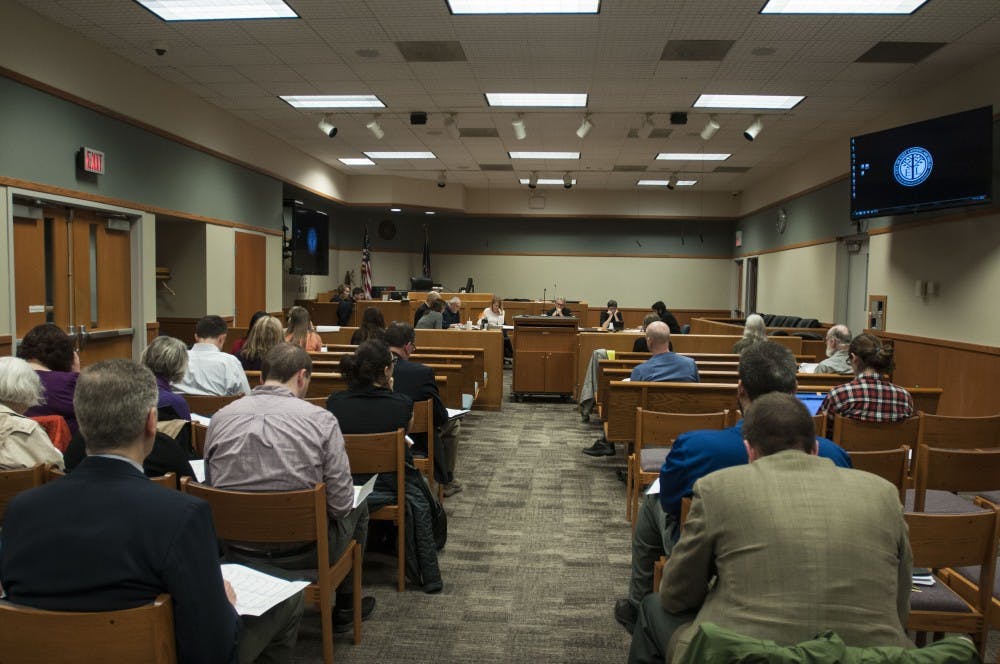The East Lansing City Council approved its fiscal year 2020 budget and capital improvement plan, which outlines the city’s sources of revenue and area of priority for investment in public projects, at its May 21 meeting.
The budget resolution outlines 25 different revenue sources that are mostly allocated for specific areas of city development, like streets and waste management. The council passed the resolution documents after multiple work sessions to iron out revenue and investment details.
The $38.2 million general fund is the most flexible revenue source for the city. Other areas of the city budget are restricted for specific uses. The largest source of revenue is allocated in the sewage disposal system fund at $48.5 million.
The income tax is estimated to bring in $9 million, which is $1 million below the initial projection when the tax was first implemented.
City Manager George Lahanas said the city will have a clearer picture on income tax revenue from the city after one full year of collection and tax season filing.
"We’re really not going to have a complete perfect picture until 18 months into the income tax, and right now we’re about five months into the income tax,” Lahanas said.
State law requires capital improvement plans. Eligible projects are limited to acquisitions and construction of land, structures or facilities for long-term public use. In total, the East Lansing capital improvement plan administers $64.7 million for those improvements in 2019.
“This year what we launched to do was make sure that 2020 had things that were actually budgeted and
going to be completed,” Lahanas said.
He said, unlike last year, the budget for the following year has revenue that allows for it.
The city now projects revenue to grow in its five-year forecast. Last year, budget discussions laid out a grim financial future, at some points describing the budget as unsustainable.
Infrastructure investments include $7.1 million for major street improvements, $1.28 million for local streets and $22.7 million for parking restoration and the Center City and University Place parking garages.
Water and sewer investments total $10.4 million. The Water Resource Recovery Facility will receive $19.3 million which includes a new bio-solids digester and facility improvements.
The Hannah Community Center will receive $129,000. The city council approved an assurance form for the MCACA CIP grant to fund theater, sound and lighting upgrades for the Albert A. White Performing Arts Theater. The city also established the Hannah Community Center Committee in December 2018, which aims to guide future improvements and programming needs.
For parks and recreation, 97% of the budgeted improvements are for restoration and extension of the Northern Tier Trail. The other investments are for baseball field improvements at Patriarche Park and improvements at Bailey Park.
A parks department survey in March said 57% of residents want more trail improvements.
East Lansing trail projects will receive $1 million. Only $11,000 will come from the city’s general fund, the rest of the funding is provided by grants from the Ingham County Trails Millage and the Department of Natural Resources Trust Fund.
The document also houses the city’s projected areas of priority in a six-year timeframe. Many items in the capital improvement plan project an increase in spending for 2020, but the total projected investment for next year is about $20 million less, at $46.6 million.
Support student media!
Please consider donating to The State News and help fund the future of journalism.
Discussion
Share and discuss “City budget and investment plans prioritize infrastructure and public projects” on social media.





